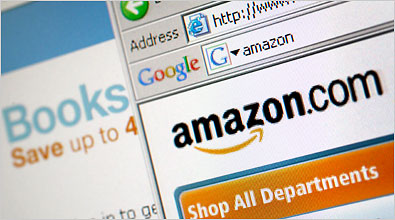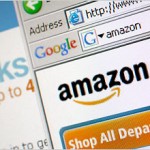

Anticipatory shipping may be closest that retail can come to a crystal ball. Amazon, which now has a patent for the algorithm-based system, could conceivably use the system to ship products before you even place an order.
Amazon filed for the patent, officially known as “method and system for anticipatory package shipping,” in 2012, and it was awarded on Christmas Eve of the following year. The patent summary describes a method for shipping a package of one or more items “to the destination geographical area without completely specifying the delivery address at time of shipment,” with the final destination defined en route.
While Amazon would not comment on the patent, the benefits of such a system for the No. 1 retailer in the world are obvious. Predicting customers’ orders could increase sales and potentially reduce shipping, inventory and supply chain costs.
“Supply chain and logistics optimization is neither easy nor cheap, but it is the biggest opportunity for most companies to significantly reduce their cost and improve their performance.,” wrote H. Donald Ratliff, Ph.D., executive director of the Supply Chain and Logistics Institute, in a paper (PDF). “For most…operations, there is an opportunity to reduce cost by 10% to 40% by making better decisions.”
So just imagine a company the size of Amazon making accurate supply and shipping decisions before a customer’s decisions are finalized.
It’s unclear how much money Amazon currently expends on scrambling to fulfill the two-day shipping requests from Amazon Prime customers (two-day shipping on all purchases for $79 a year), but if the products are already on their way, it’s bound to save Amazon time and money.
But how, you ask, could Amazon possibly predict what you want? That’s where the algorithm comes in. According to the patent, this forecasting model uses data from your prior Amazon activity, including time on site, duration of views, links clicked and hovered over, shopping cart activity and wish lists. When possible, the algorithm also sprinkles in real-world information gleaned from customer telephone inquiries and responses to marketing materials, among other factors. Together, this can provide “decision support for speculative shipping of items,” per the patent.

This flow chart, from Amazon’s patent, offers a rudimentary explanation of how Anticipatory Shipping might work.
Although Amazon is capable of delivering shipment in two days, the company still acknowledged its disadvantage when compared to brick-and-mortar retailers. The patent outlines all the benefits of electronic commerce, but adds one substantial disadvantage: Often, customers can’t receive items immediately upon purchase, and instead must wait for the product to be shipped. Even though services like next-day air can mitigate this issue, they are cost-prohibitive; low-priced shipping alternatives can delay shipping by a week or more. These delays could dissuade customers from online purchases.
Amazon’s system involves two computers, one that identifies the general shipping location and a second that waits for the delivery address to be finalized. Hypothetically, if residents of Des Moines, Iowa, buy a lot of scarves in January, a local fulfillment center might fill up with a collection of scarves — but none would be shipped until an actual order is received at Amazon’s home-based shipping system. When an order is placed, the item would already be halfway to its destination, cutting delivery time to as little as one day. It could be even quicker, depending on the customer’s proximity to an Amazon distribution center.
Amazon is not alone in seeking better fulfillment strategies.
“While we don’t discuss competitors, I can share that using technology to provide more fulfillment options is a key part of Target’s multi-channel strategy,” Eddie Baeb, a Target spokesperson, wrote in an email to Mashable. Baeb didn’t mention plans to anticipate customer’s orders, but he did note that starting last year, Target customers can order products online and pick them up at local stores. This year, Target is experimenting with shipping online orders from local stores.
Anticipatory shipping may not be as sexy as delivery drones, but it’s a lot more practical. Plus, for all we know, may already be part of Amazon’s day-to-day business practices.
By: Lance Ulanoff, editor in chief, Mashable
Originally published at mashable.com
You must be logged in to post a comment.
Great site keep posting more! build now gg
It’s possible that anticipatory shipping is already integrated into Amazon’s day-to-day operations, reflecting the company’s commitment to leveraging technology to enhance the customer experience Spend Elon Musk Money and optimize logistical efficiency.
This is very nice, indeed.
Spinner Tools